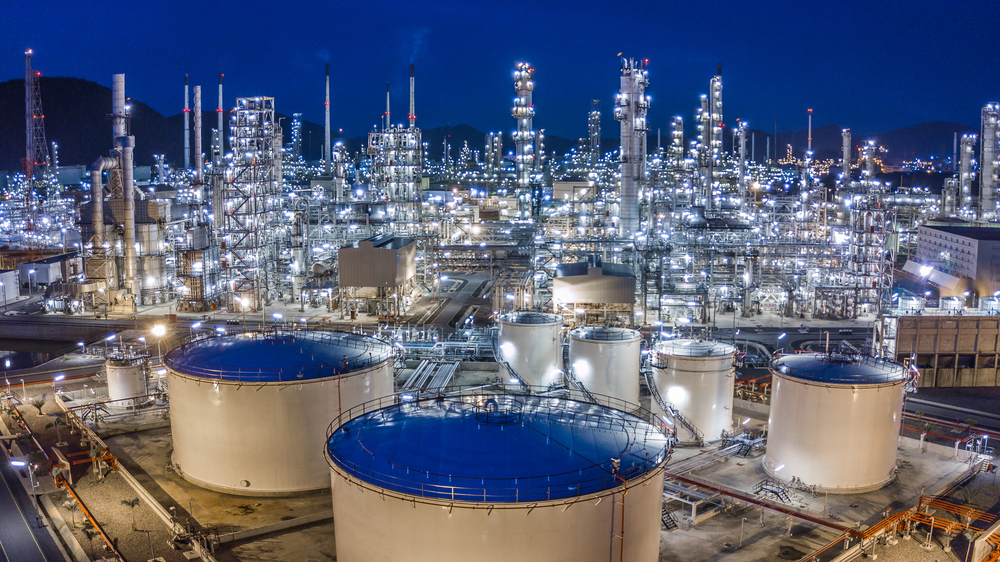Exclusive: Taking a step towards digitalisation in the Oil & Gas sector
- October 6, 2020
- 9:03 am

Matt Head
Share this content
Business Development Manager for the Critical Infrastructure segment at Axis Communications in the Middle East, Meraj Khan reports on the digitalisation of flare monitoring.
Even to those not working in the oil and gas industry, the image of a burning flare above an industrial plant is a familiar one. For people working directly in the sector, the critical importance of gas flares in ensuring Health and Safety is well-understood.
Industrial flaring is a regulatory requirement to manage the releases coming out from the flare stacks while also serving as a safety mechanism. As the oil and gas industry continues to look at how digitalisation can bring benefits in operational effectiveness and efficiency, particularly as a result of the COVID-19 pandemic’s effect on staff numbers and proximity, the potential for automated flare monitoring is significant.
In this article, we will consider how we can efficiently monitor the burning of gas flaring by digitally analysing the behaviour of the flare through thermal and visual spectrum of IP-based camera technology.
The flare – A critical element of safety
The hydro-carbon processing in an industrial plant is highly complex and can result in the separation of abundant unwanted gases, which may not be utilised due to the negative commercial viability for further processing. As a result, these complex and hazardous gases need to be disposed of safely in the environment through flaring while keeping in consideration that unwanted gas should disappear in the environment without a trace.
The most important part of flaring is to support the plant operation by easing the pressure of gas generated through different phases of processing in the plant; the plant automation system ensures that the emergency pressure valves release get activated automatically in case of high pressure generated.
The visual behaviour of the flare confirms the various states of plant operations. For instance, if the flare combustion is high with high thermal radiation, it is most likely the plant is running under emergency or in an upset condition. In this case, pressure safety valves are activated to stabilise the pressure and result in an aggressive flare. The plant manager can take the necessary steps or, in extreme conditions, can stop production in the plant to further ensure the Health and Safety of the site personnel.
Knowing the critical importance of the flare in the plant, the flare must always be in operational state and it is therefore of utmost importance to get the real time feedback from the flare, i.e. If the flare combustion is in the permissible limit of sterile radius in normal operation (Low, Medium or High).
If the thermal radiation is exceeding the permissible limit in case of Plant Upset conditions.
If the pilot flame which consists of high ignition electrodes (ignitor) is working appropriately.
Gas flares themselves are highly dynamic at various stages of production, different gases at different pressures will be burnt and thus changing the flare’s fundamental characteristics. Some flares at lower pressure – known as ground flares – only rise to two or three metres above the ground; elevated flares, as the name suggests, rise much higher, sometimes reaching as much as 100 metres above ground. The need to closely monitor the state and behaviour of stack flares is therefore critical to the overall safety of oil and gas processing plants and refineries.
Flare monitoring – A traditionally manual task
Given their nature, flares operate under hostile, unpredictable and extreme conditions and therefore need to be positioned a safe distance from the main processing area of the plant. In addition, health and safety regulations will stipulate a safety zone around the flare primarily based on thermal radiation and sterile zone limits, typically a radius of twice the maximum height of the flare. Rarely any active equipment used for flare monitoring will be placed closer to the flare as operation and maintenance is always a challenge in sterile zones due to high temperature and thus these installations are often kept much further away.
Traditionally, flare monitoring has been a manual task, with operators using video from analogue thermal cameras to assess the state of the flare at different stages of production. And this coordination with the production process is vital; the expected flare behaviour and characteristics will differ in relation to processing activity and the use of safety valves.
In addition, one of the most critical aspects of the flare is the pilot light, a much smaller flame (often only 30cm high or less) which must always remain on, even if no gas is being released and burnt. Monitoring of the pilot flame is therefore essential and thermal temperature alarm cameras can provide feedback on the temperature of the pilot and alert through an automated alarm if the temperature of the pilot flame falls to a specified limit.
A further challenge for manual monitoring is that, at certain stages of production, flares may burn transparently, making visual monitoring difficult, if not impossible.
Monitoring manually is therefore an intensive activity and human fallibility always presents a potential risk. In addition, with the recent impact of the COVID-19 pandemic, many sites are operating with fewer personnel than previously, further exacerbating the risks of manual monitoring. Flaring is considered as a last line of defence to prevent dangerous hydrocarbon pollutants from entering the atmosphere – for example methane is ignitable and is far more powerful than CO2 as a greenhouse gas.

Monitoring using thermal and video cameras
Visual cameras play a central role in monitoring flare characteristics and responding to their behaviour. For instance, a visual camera will enable operators to see if the flare is burning off the gases efficiently, i.e. there should not be any smoke. If smoke is visible, operators may need to increase the temperature of the flare by adding oxygen or water mist as more fuel. This response is critical: regulations only allow smoke to be emitted for a very limited time and the incident must be reported and analysed. Transgressions potentially come with steep fines and may even result in permits being revoked.
Infrared (IR) thermal imaging is an ideal enhancement to the challenge of accurate flare monitoring in all conditions and forms a central part of an automated monitoring system. A high-range thermal camera – particularly a thermographic one – will produce a high-resolution image of a gas flare from almost any distance, allowing for the camera to be sited in a safe area and therefore also aiding ease of camera maintenance. If required or necessary, cameras with thermal capability enclosed in explosion-protected housing with Class 1 Division 1 and IIC as a gas group can be utilised to ensure no spark from the camera will escape and risk igniting any hydrocarbons present in the air.
Thermal cameras measure the instantaneous temperature of the infrared radiation emitted from a gas flare and pilot light, allowing for extremely accurate analysis of the flame characteristics. If a flame is burning transparently and invisible to the human eye, for instance, or when weather conditions such as high winds causing the flare to rapidly move or change direction, a thermal camera will still return an accurate image.
Highly accurate temperature reading also allow operators to be confident that gases are indeed being burnt off: if the flame point of a particular gas being burnt is higher than the temperature of the flare at any point, the gas will be released into the atmosphere untreated. All the data returned can then be fed into the process control system to fine-tune the flare.
Thermal cameras provide the basis for an automated flare monitoring system and when based on open standards can easily be integrated with the plant SCADA system. Such accurate measurement of temperature, when coordinated with processing activity, will give far earlier warning of any issues than manual monitoring. If flares are burning higher, lower, hotter or cooler than expected, or should the pilot light go out, alarms and alerts can be created for operator verification and intervention.
In these instances, the use of dual or bi-spectral cameras – those which employ both thermal and visual sensors – brings additional benefits. While thermal images are optimal for analytics and automated monitoring, high-resolution video cameras will allow human operators to more clearly assess flare behaviour when alerted and are also essential in post-incident investigation.
An additional benefit of automated flare monitoring with thermal and video sensors is the ongoing collection and analysis of data. When aggregated and used in machine learning (ML) applications, this information will lead to future innovations in operational efficiency, additional automation and proactive maintenance.
Oil and gas industry digitalisation
The oil and gas sector continues to look at the ways digital technologies can be employed to create both operational efficiencies and improve safety and security. While gas flares have been used since the early days of oil and gas production and refining, their monitoring is an area which can be enhanced through advanced digital technology, with improved safety and efficiency the result.
This article was originally published in the September/October 2020 edition of International Fire and Safety Journal. Pick up your FREE digital copy here



